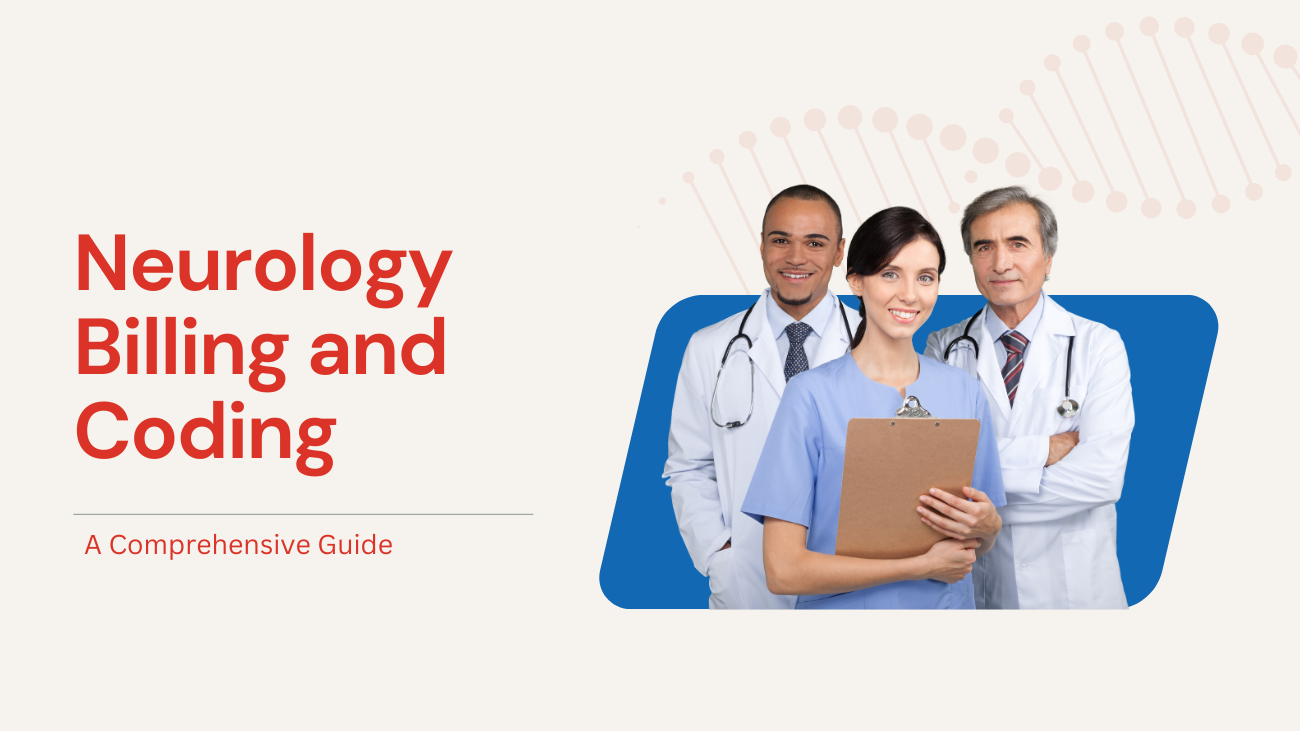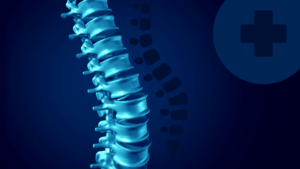Providing quality neurology services to patients requires not only expertise in the field but also a solid understanding of the complex world of neurology billing and coding. Efficiently managing the financial aspect of a neurology practice necessitates familiarity with the intricacies of submitting claims, adhering to regulations, and staying up to date with the ever-evolving billing codes. Within this exhaustive guide, we navigate the intricate world of neurology billing and coding, shedding light on the obstacles faced by healthcare providers and presenting pivotal strategies to triumph over them.
Understanding Neurology Billing and Coding
Neurology billing encompasses the process of submitting claims to insurance companies or payers to seek reimbursement for the services rendered by neurology healthcare providers. Central to this process are the neurology billing codes, which identify the specific procedures and treatments provided. These codes are based on the widely recognized Current Procedural Terminology (CPT) system, maintained by the esteemed American Medical Association (AMA). Being well-versed in the codes of various neurological procedures like lumbar punctures, treatment for dementia, movement disorders, headaches, epilepsy, sleep disorders, chronic pain management, and multiple sclerosis or neuromuscular diseases; management of bipolar disorder and schizophrenia; psychiatric procedures is crucial to ensure accurate billing and maximize reimbursement.
According to NCBI, for hospitalists and other hospital providers, services are coded under the Current Procedural Terminology (CPT) Evaluation and Management (E/M) guidelines. These codes are based on either the level of medical complexity or on time spent on care. When coding on medical complexity, each E/M service encounter has 3 major components: the history, examination, and the complexity of medical decision-making (MDM). MDM is further divided into the number of diagnostic considerations or management options, the amount and intensity of data review, and risk. MDM level is determined by the highest of 2 of the 3 categories. Depending on the type of encounter, i.e., an initial or subsequent visit, inpatient or outpatient, there are specific requirements within those 3 components that must be included in order to achieve a certain billing code level.
Related Post :  Peripheral Neuropathy ICD 10 Codes
Peripheral Neuropathy ICD 10 Codes 
Commonly used ICD-10 and CPT codes for Neurology Billing and Coding:
ICD-10 Codes for Some Common Neurology Conditions
- F90.9 Attention-Deficit Hyperactivity Disorder, Unspecified Type
- F03.90 Unspecified Dementia Without Behavioral Disturbance
- G30.9 Alzheimer’s Disease, Unspecified
- R47.01 Aphasia
- R48.1 Agnosia
- R48.2 Apraxia
- G45.9 Transient Cerebral Ischemic Attack, Unspecified
- I63.9 Cerebral Infarction, Unspecified
- G52.9 Cranial Nerve Disorder, Unspecified
- E72.01 Cystinuria
- F72 Severe Intellectual Disabilities
- F84.0 Autistic Disorder
- F84.5 Asperger’s Syndrome
- R62.0 Delayed Milestone In Childhood
- E70.0 Classical Phenylketonuria
- E70.1 Other Hyperphenylalaninemias
- E72.04 Cystinosis
- E75.02 Tay-Sachs Disease
- G43.001 Migraine Without Aura, Not Intractable, With Status Migrainosus
- G43.101 Migraine With Aura, Not Intractable, With Status Migrainosus
- G43.821 Menstrual Migraine, Not Intractable, With Status Migrainosus
G43.C1 Periodic Headache Syndromes In Child Or Adult, Intractable - G43.D0 Abdominal Migraine, Not Intractable
- G03.9 Meningitis, Unspecified
- G04.90 Encephalitis And Encephalomyelitis, Unspecified
- G04.91 Myelitis, Unspecified
- C71.6 Malignant Neoplasm Of Cerebellum
- G12.21 Amyotrophic Lateral Sclerosis
- G12.29 Other Motor Neuron Disease
- F95.2 Tourette’s Disorder
- F95.9 Tic Disorder, Unspecified
- G10 Huntington’s Disease
- G20 Parkinson’s Disease
- G71.0 Muscular Dystrophy
- G0.61 Intraspinal Abscess And Granuloma
- G11.1 Early-Onset Cerebellar Ataxia
- G12.9 Spinal Muscular Atrophy, Unspecified
- G50.0 Trigeminal Neuralgia
- G51.0 Bell’s Palsy
- G40.101 Localization-Related (Focal) (Partial) Symptomatic Epilepsy And Epileptic Syndromes With Simple Partial Seizures, Not Intractable, With Status Epilepticus
- G40.109 Localization-Related (Focal) (Partial) Symptomatic Epilepsy And Epileptic Syndromes With Simple Partial Seizures, Not Intractable, Without Status Epilepticus
- G25.81 Restless Legs Syndrome
- G47.00 Insomnia, Unspecified
- G47.20 Circadian Rhythm Sleep Disorder, Unspecified Type
- G47.30 Sleep Apnea, Unspecified
- D89.89 Other Specified Disorders Involving The Immune Mechanism, Not Elsewhere Classified
- E11.42 Type 2 Diabetes Mellitus With Diabetic Polyneuropathy
- F32.9 Major Depressive Disorder, Single Episode, Unspecified
- G11.8 Other Hereditary Ataxias
- G12.29 Other Motor Neuron Disease
- G12.8 Other Spinal Muscular Atrophies And Related Syndromes
- H02.409 Unspecified Ptosis Of Unspecified Eyelid
- H46.9 Unspecified Optic Neuritis
- H47.20 Unspecified Optic Atrophy
- M54.10 Radiculopathy, Site Unspecified
- M54.2 Cervicalgia
- M54.5 Low Back Pain
- M60.9 Myositis, Unspecified
- M62.50 Muscle Wasting And Atrophy, Not Elsewhere Classified, Unspecified Site
- M79.1 Myalgia
- M79.2 Neuralgia And Neuritis, Unspecified
- M79.609 Pain In Unspecified Limb
- R13.10 Dysphagia, Unspecified
- R25.2 Cramp And Spasm
- R41.2 Retrograde Amnesia
CPT codes for neurology and neuromuscular procedures
The CPT code range for neurology and neuromuscular procedures includes:
- 95700-95811 Sleep Medicine Testing and Long-term EEG Procedures
- 95812-95830 Routine Electroencephalography (EEG) Procedures
- 95829-95836 Electrocorticography
- 95851-95857 Range of Motion Testing
- 95860-95872 Electromyography Procedures
- 95873-95887 Ischemic Muscle Testing Procedures and Guidance Procedures for Chemo denervation
- 95905-95913 Nerve Conduction Tests
- 95919-95924 Autonomic Function Testing Procedures
- 95925-95937 Evoked Potentials and Reflex Testing Procedures
- 95938-95941 Intraoperative Neurophysiology Procedure
- 95954-95726 Special EEG Testing Procedures
- 95970-95984 Neurostimulators Analysis-Programming Procedures
- 95990-95999 Other Neurology and Neuromuscular Procedures
- 96000-96004 Motion Analysis Procedures
- 96020-96020 Functional Brain Mapping
Challenges in Neurology Billing and Coding
Neurology billing presents a unique set of challenges for healthcare providers. Staying compliant with the rules and regulations set forth by insurance companies and government agencies, such as the Centers for Medicare and Medicaid Services (CMS), is of utmost importance. Non-compliance can lead to denials, delayed payments, and potential legal repercussions. Keeping up with the ever-changing landscape of neurology billing codes is another hurdle, requiring ongoing education and training to prevent errors and optimize revenue cycle management.
- Complexity of neurological disorders: Neurology is a complex medical specialty, and the disorders that neurologists treat can be very challenging to diagnose and code. This can lead to errors in coding, which can result in claim denials or delayed payments.
- Intricacy of documentation requirements: Neurology billing and coding is highly dependent on accurate and detailed documentation. This documentation must be compliant with the Health Insurance Portability and Accountability Act (HIPAA) and other regulations. Failure to meet documentation requirements can lead to claim denials.
- Regulatory compliance: The healthcare industry is constantly changing, and the regulations governing billing and coding are no exception. Neurologists must stay up-to-date on the latest regulations in order to ensure that their claims are compliant. Failure to comply with regulations can result in fines or penalties.
Strategies for tackling the challenges:
For effective neurology billing and coding healthcare providers can adopt several key strategies:
- Expertise and Training: Investing in specialized training and continuous education for the billing and coding staff ensures a deep understanding of neurology-specific codes and regulations. This expertise minimizes errors, optimizes reimbursement, and mitigates compliance risks.
- Technology Integration: Implementing robust billing software and electronic health record (EHR) systems streamlines the neurology billing process. Automated coding, claims submission, and comprehensive reporting improve accuracy, efficiency, and overall revenue cycle management.
- Documentation Excellence: Thorough and accurate documentation is vital for successful neurology billing. Healthcare providers should emphasize comprehensive patient records, including detailed descriptions of diagnoses, treatments, and procedures. This documentation provides the foundation for precise coding and supports successful claims submission.
- Continuous Auditing and Monitoring: Regular internal audits and ongoing monitoring of billing processes are critical to identifying potential errors, compliance issues, and areas for improvement. Proactive measures ensure early detection and resolution of discrepancies, enhancing overall financial performance.
- Partnering with Experts: Collaborating with professional medical billing and coding services specializing in neurology can alleviate the burden on healthcare providers. These experts possess the knowledge, experience, and resources to navigate the complex billing landscape effectively, enabling medical practices to focus on patient care while ensuring optimal reimbursement.
Mastering the art of neurology billing and coding is indispensable for healthcare providers striving to provide exceptional neurology services while maintaining financial stability. By understanding the nuances of neurology billing codes, embracing compliance, and implementing efficient processes, medical practices can overcome challenges, optimize revenue, and ensure a seamless experience for both patients and providers.




